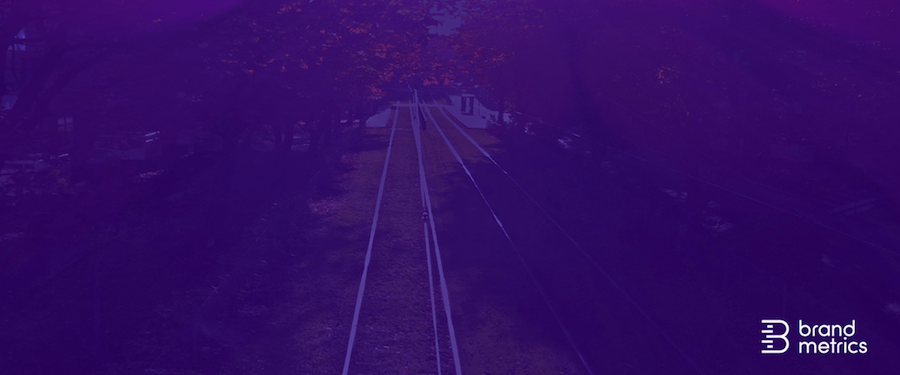Why publishers need to shift brand lift measurement to an always-on metric

Anders Lithner, CEO, Brand Metrics AB
Publishers have long argued that context is important, and that advertising in their environments improves lift-related metrics such as brand awareness, consideration, preference and action intent. But many publishers don’t have the data to prove that this is the case.
Measuring a campaign’s effectiveness is typically expensive, both in terms of hard research costs and the human resources required to manage a study. According to one publisher we spoke to, this means fewer than 15 percent of campaigns get measured, while the rest try to satisfy advertisers with impression, viewability and click data.
Major tech platforms like Facebook and YouTube do offer brand lift data as an always-on metric. In other words, these platforms are proving their brand-building capacities each time. By contrast, most publishers rely on past data or comparable research, not data specific to an ongoing campaign.
But what if publishers, too, could provide hard data for every campaign, regardless of size or duration, demonstrating the brand lift that each one has delivered?
Five factors will drive scalable brand lift metrics
Publisher-provided campaign data, the kind that shows brand lift, is a game-changer, transforming ad hoc research — offered only to clients already willing to spend big budgets — into an always-on metric, proving the value of advertising to each and every client to win bigger and always-on campaigns.
For advertisers, it means that every post-campaign report they receive from publishers doing this contains data about a campaign’s effectiveness across key brand metrics. Meanwhile, it enables publishers to build up an invaluable bank of knowledge about how advertising works in their environments, fueling future pitches and giving salespeople confidence to recommend best practices for optimizing campaigns.
In practice, turning brand lift into a scalable metric requires five key elements:
1. Simplicity: Few teams have the time or resources to add yet another process to each campaign setup. So that it becomes part of business as usual, measuring brand lift must require only a light touch and should be fully automated.
2. Consistency: Brand lift should be measured the same way for every campaign. This is partly to maintain simplicity, but also to enable comparability between campaigns, allowing publishers to build up detailed benchmarks to contextualize results. Looking into more than 7,000 recent campaigns measured identically by Brand Metrics, the average campaign increases brand awareness levels from 56 percent to 60 percent. Consideration rises from 29 percent to 32 percent, while preference increases from 17 percent to 20 percent and action/purchase intent rises from 7 percent to 9 percent. Some campaigns don’t create any uplift at all, but others massively exceed these averages. Knowing the difference is business critical.
3. Cost efficiency: To become a true metric, brand lift must evolve from being an ad hoc cost (which always begs the question, “Should we measure this campaign at all?”) into a flat-fee, all-you-can-measure model, thereby encouraging usage at scale without forcing sales teams to worry about incremental costs.
4. Automated outputs: When measuring campaigns at scale, publishers must be able to extract the results easily via automated post-campaign reports, or else through an API feed directly into their own data lakes and dashboards. Report-writing time can then be redeployed into more business-building activities, such as interpreting the findings and providing advertisers with advice on future campaigns.
5. Sample comparability: Measurements need to occur inside the very ecosystems where the campaigns are happening, not in the laboratory setting of a research panel. Using panels leads to sample effects that distort the comparison, as well as differences unrelated to campaign exposure. The use of panels also makes comparisons between channels, markets and global benchmarks impossible — and the tactic can’t be scaled. Just like the big tech platforms, publishers should be capturing measurements purely from within their own ecosystems. Only then can potentially misleading variations be eliminated, allowing brand lift to become an always-on metric.
Emerging solutions focus on metrics that matter
With advertising budgets under increasing pressure, publishers and broadcasters need to justify every dollar, on every campaign, to win more spend from cost-focused agencies and marketers. To win back more budgets from the big tech platforms, they must answer an age-old question — “Is our advertising working?” — with confidence.
Of course, any solution to that challenge, working with the five key elements above, also needs to operate within the restrictions of GDPR/CCPA, and within a world where third-party cookies are fast disappearing.
Fortunately, such solutions exist and are working for publishers right now, enabling them to ensure that brand lift is a standard offering available to all advertisers. This is shifting the conversation away from pure delivery metrics and towards the metrics that really matter. Finally, publishers can prove that advertising in their environments really works. Many media owners already do. And, as revealed by data, the ones that make moves that deliver scalable brand metrics early, stand to claim an audience share that slower adopters will almost certainly miss.
More from Digiday

With Firefly Image 3, Adobe aims to integrate more AI tools for various apps
New tools let people make images in seconds, create image backgrounds, replacing parts of an image and use reference images to create with AI.

With the rise of the chief AI officer, it’s time to examine ‘czar’ culture
Even if it’s a familiar pattern — hot new thing, new C-Suite exec to tackle said thing, a few years go by and that C-Suite position no longer exists as everyone is now doing said thing (or it was a fad that has since faded away) — does it make sense for businesses to continue to appoint new czars with every new trend?

Why Cava’s bid for brand awareness means prioritizing streaming ads
Fast-casual restaurant chain Cava has been in growth mode over the past year and is leaning into streaming ads in an effort to boost brand awareness.





